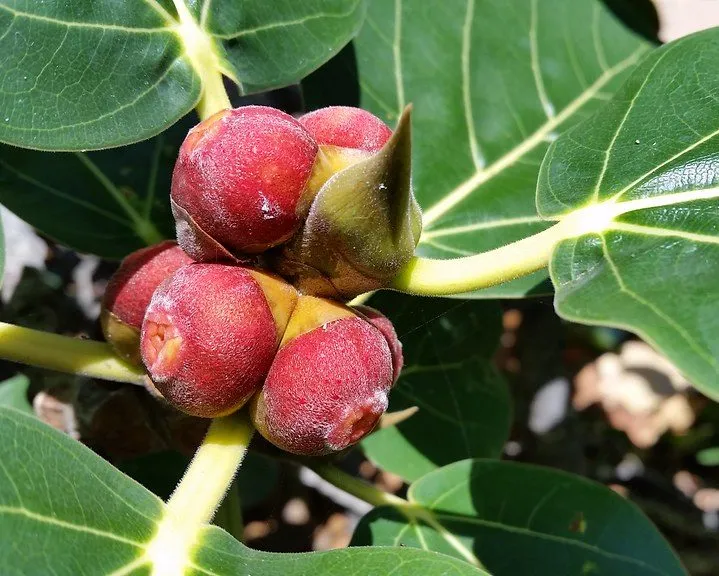Description
Ficus benghalensis, commonly known as the banyan tree or Indian banyan, is a species of fig tree belonging to the Moraceae family. Here’s an overview of Ficus benghalensis:
- Appearance: The banyan tree is a large, evergreen tree with a spreading canopy that can cover a vast area. It typically grows to a height of 15 to 25 meters (50 to 80 feet) or more and has a wide trunk with aerial roots that descend from its branches. These roots eventually reach the ground and form additional trunk-like structures, giving the banyan tree a distinctive and majestic appearance.
- Distribution: The banyan tree is native to the Indian subcontinent, where it is considered sacred in Hinduism, Buddhism, and Jainism. It is also found in other parts of South Asia, Southeast Asia, and tropical regions worldwide, where it has been introduced as an ornamental tree.
- Cultural Significance: The banyan tree holds cultural and religious significance in many cultures, symbolizing longevity, wisdom, and interconnectedness. In Hindu mythology, it is believed to be the abode of the god Vishnu, while in Buddhism, it is associated with enlightenment and the Bodhi tree under which the Buddha attained enlightenment. Banyan trees are often found near temples, shrines, and sacred sites, where they are venerated and protected.
- Ecological Importance: Banyan trees provide important habitat and resources for a wide range of wildlife, including birds, insects, and mammals. The aerial roots, branches, and dense foliage create a complex ecosystem that supports diverse plant and animal species. Banyan trees also play a crucial role in stabilizing soil, preventing erosion, and mitigating the effects of climate change.
- Propagation: Banyan trees reproduce both sexually, through the dispersal of seeds by birds and other animals, and asexually, through the growth of aerial roots that take root and form new trunks. This unique reproductive strategy allows banyan trees to spread and colonize new areas rapidly, often forming extensive groves or “banyan forests.”
- Uses: In addition to their cultural and ecological significance, banyan trees have various practical uses. The leaves are used as fodder for livestock, and the latex-like sap, known as “milky sap,” has traditional medicinal uses in some cultures. The wood of the banyan tree is durable and is used in construction, furniture making, and crafts.
Overall, Ficus benghalensis, the banyan tree, is a remarkable and iconic species with profound cultural, ecological, and practical importance in the regions where it occurs. Its sprawling canopy and aerial roots make it a symbol of resilience, interconnectedness, and the cycle of life.
Reasons to buy from Plantssouq
– Fast Delivery
– Whatsapp Us On :0566670322 Dubai
- – Support 24/7 :
* Phone/whatsup:0566670322
* Email : [email protected]





Reviews
There are no reviews yet.